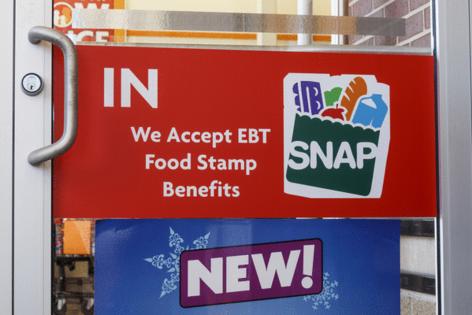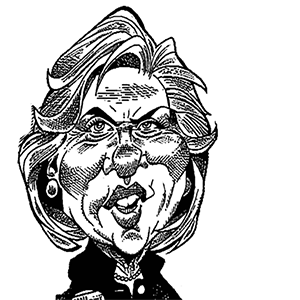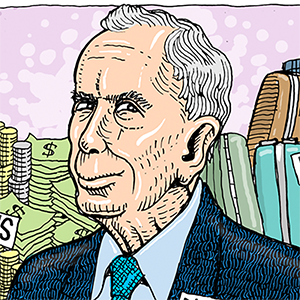In pricey Washington, any cuts to food stamps could hit hard
Published in News & Features
The Republican-led House passed a budget resolution last month calling for a $2 trillion reduction in spending over the next decade. To meet this goal, lawmakers could end up targeting major safety-net programs, including the Supplemental Nutrition Assistance Program.
The program, also known as food stamps, helps low-income Americans afford groceries. It also represents an enormous amount of federal spending. In the 2024 fiscal year, the federal government distributed around $93.84 billion in SNAP benefits, and an average of 42.1 million people participated in the program each month. Republicans have tried to reduce SNAP spending in the past.
"The implications of SNAP reductions here in Washington state from the federal level would be really catastrophic," said Jamielyn Wheeler, senior director of strategic initiatives at Northwest Harvest, a nonprofit serving food banks across the state.
Over 900,000 people in Washington state participated in SNAP, receiving nearly $168 million in benefits, in November 2024, the most recent month for which data is available.
Here's how lawmakers could reduce SNAP spending, and how it would affect people in Washington.
How much might SNAP be cut?
The budget resolution passed late last month directs the House Agriculture Committee, which oversees SNAP, to find $230 billion in cuts over the next decade.
While the committee has jurisdiction over a wide range of issues — farming, conservation and forestry among them — nutrition assistance comprises a significant proportion of the nation's agricultural spending. Limiting SNAP spending has also long been a Republican priority, including during President Donald Trump's first term.
His administration previously proposed SNAP changes including stricter work requirements and tighter time limits on how long an individual could receive benefits. House Speaker Mike Johnson has previously referred to SNAP as "one of our nation’s most broken and bloated welfare programs."
As a result, it's likely that the current Congress will attempt to enact at least some cuts.
What would cuts look like?
Republicans are considering a slate of policy options to achieve targeted spending cuts, according to a document obtained by POLITICO, a political news organization.
For SNAP specifically, those cuts could take a few different forms, according to the document. One proposal would cap the amount in benefits that a family could receive. Right now, benefits increase based on family size; under the proposal, they'd max out at the level set for a family of six, regardless of additional members.
Other ideas in the document include imposing more work requirements and requiring greater scrutiny of improper payments.
Congress could also cut SNAP spending across the board by changing the way benefits are determined.
The federal government uses what's called a "thrifty food plan" to estimate how much money a household needs to eat healthy while keeping a tight budget. In 2021, the Biden administration implemented an update to the thrifty food plan formula that resulted in a significant, program-wide increase in benefits.
If the 2021 update is rolled back, all recipients would see a corresponding drop in monthly payments.
How hard would Washington state be hit?
Any cuts would hit Washington residents particularly hard. The state has relatively high food costs, and SNAP benefits are not adjusted for regional cost-of-living differences outside of Hawaii and Alaska.
"You're going to see a lot bigger of a gap between SNAP benefits and meal costs in Washington," said Poonam Gupta, research associate at the Urban Institute, a left-leaning research organization.
A Wednesday analysis by the Urban Institute looked at the average cost of a modestly priced meal across all 50 states. The calculation is based on food expenditure data gathered by the U.S. Census for families that were both food secure and low-income, as well as county-level food price indexes, in 2023.
The average cost of a modestly priced meal in Washington was one of the highest in the nation at $3.88 per meal, the analysis found. Only New York, Washington, D.C., Massachusetts, Vermont and Connecticut ranked higher in the contiguous U.S.
The gap widens further at the county level. According to the analysis, the average cost of a modestly priced meal was $4.21 in King County in 2023.
"It's no surprise to anyone that food prices have been rising over the past five years," said Gupta. "All households in the U.S. are seeing this pressure and facing this anxiety over food prices. But of course, it's those with the most limited resources for food that are affected the most."
Who would be affected?
Any cuts would most obviously and immediately impact people who receive SNAP benefits. But how exactly households would be hit depends on what lawmakers ultimately decide to pursue.
Cuts to SNAP would also be felt more widely because food stamps represent a major source of consumer spending. People use their benefits at supermarkets, convenience stores, farmers markets and even at restaurants in limited circumstances. Scaling back benefits would mean lost revenue for businesses.
"Food retailers, including grocery stores and farmers' markets, depend on SNAP dollars to stay afloat," wrote a coalition of anti-hunger and community organizations in a letter to lawmakers Thursday. "In areas where food retailers are already struggling, any reduction in SNAP benefits would have a catastrophic impact on businesses and the local economy.
_____
© 2025 The Seattle Times. Visit www.seattletimes.com. Distributed by Tribune Content Agency, LLC.







Comments